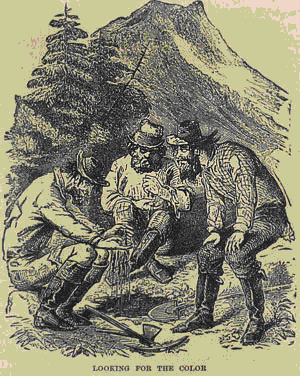 I’m over at ARC today blogging about writing, storytelling and the lessons I’ve learned from my family’s Project: Urban Wildlife.
I’m over at ARC today blogging about writing, storytelling and the lessons I’ve learned from my family’s Project: Urban Wildlife.
Amy R. Blake
Communications to strengthen your organization from the inside out
Category: communications (page 1 of 2)

![]() I’m a writer. I am always in search of the right word, the right expression, the right pace.
I’m a writer. I am always in search of the right word, the right expression, the right pace.
I am most certainly not a numbers person.
But as a communications professional, I’ve had to get comfortable understanding and working with data and numbers of all kinds. That’s why I’m (almost) as likely to be examining a spreadsheet as I am writing a story (or blog post). That’s because I’ve learned to see reports and spreadsheets as more than just a jumple of numbers. Stories hide within, just waiting to be discovered.
Join me over at ARC Communications today where I’m blogging about how to dig into your data to find more stories.
This is part 2 of a post orginated on ARC Communications.
 Personality differences, past run-ins or office politics – whatever the cause, Bad Blood can make meetings uncomfortable and stymie progress.
Personality differences, past run-ins or office politics – whatever the cause, Bad Blood can make meetings uncomfortable and stymie progress.
Worse, Bad Blood can spread across an organization and shut down collaboration before it even starts.
If you’re on the outside of such a situation, you’re actually in a good position to help remedy it. Can you be a go-between or a neutral third party?
Take the role seriously. Avoid taking sides, and never share what is said in confidence. Your role isn’t to mediate the argument or solve the underlying problem. It’s to focus on what matters: the work of the organization.
If there’s no chance that will work, seek inroads elsewhere. One of my Bad Blood experiences was with two senior management members. I wasn’t going to fix the underlying conflict. It involved budgets and egos and other stuff I didn’t understand.
Instead, I knew there were plenty of people in both of their departments who got along, saw how our work intersected and wanted to collaborate. So, on the frontlines we started planning and implementing small projects together.
Of course, there was friction. Sometimes it felt like there were as many steps backward as there were forward. Still, we persisted.
Eventually, our bosses went with the momentum. They never became friends, or even friendly with each other. But they both supported the work that was happening, which was what really mattered.
If you find yourself in a Bad Blood relationship, take some time to figure out what your real beef is. Most can be overcome. You just have to put personal issues (and ego) aside and keep the organization’s mission at the center. If you differ on how exactly to do that, consider these approaches:
- Seek to understand what the other person’s goals, challenges and priorities. Share what yours are. Find the common ground and ask, how can we work together to get this done?
- Find a neutral third party who can help facilitate conversations and problem-solving.
- Take baby steps. What’s the least you can settle for? Start with that and work from there.
 I’ve worked in and with organizations of all kinds. And no matter the type or size, they share a common challenge: silos.
I’ve worked in and with organizations of all kinds. And no matter the type or size, they share a common challenge: silos.
The organizational structures and attitudes that keep us from working together can be annoying, at best. At their worst, they can be infuriating, debilitating and destructive to your working relationships and the organization as a whole.
At the core, the silo problem is a communication problem. Silos are challenging and persistent, often because they’re fueled by (executive) egos and bogged down by organizational history.
But the obstacle is neither impenetrable nor impassable. You can find a path through or around organizational roadblocks.
Take an organized approach: understand the root issue and its effects; begin building personal relationships; and lay the groundwork for true collaboration than can benefit your organization over the long term. Here are four simple steps I use to do just that:
1. Assess the problem
- Identify issues.
What silos exist in your organization?
What are the sources or causes (from your perspective)?
- Articulate impact
How do silos affect how you work?
How do they affect how other people and the organization operates?
- Focus.
Where are the easiest ins and wins?
What is one problem you can directly impact or help solve?
2. Connect
- Reach out.
Connect with an ally, a like-minded peer or a key influencer.
- Make it informal.
Meet in a neutral location, preferably not in the office-proper.
Focus first on the relationship. Make a connection. Build rapport.
- Start with a conversation.
Share what’s on your mind and your plate. Ask what’s on their mind and what their priorities are.
Where are the natural intersections and opportunities to work together?
Listen and be open to different approaches. You may have certain ideas, but they will, too.
3. Collaborate
- Start small.
Pick one project or campaign to do together.
Allay “outside” fears and concerns by sharing information with stakeholders and other key people.
- Celebrate and communicate.
Celebrate your success with each other and your teams.
Report accomplishments to leadership. Highlight success in employee and other publications.
4. Sustain and Grow
- Care for what you created.
Identify one thing you will do regularly to maintain the relationship, like a monthly coffee or quarterly update, etc. Put it on your calendar!
Identify the next three steps you will take to sustain or expand the initial project.
- Keep growing.
Keep communicating and coordinating – with each other, other groups and leadership.
Expand efforts where opportunity exists. Set a comfortable, sustainable pace.
My partner in communications crime, Richelle Morgan, knows how powerful storytelling can be for nonprofits. Her 5 Keys of Storytelling posts for ARC help any organization unlock the power of stories for fundraising and engaging donors, board members and employees . My post today uses those five keys to deconstruct a direct-mail letter and understand how they work to create vivid, memorable stories that inspire and motivate your audience.
The power of stories lies in their ability to connect emotionally. For that reason, video can take your storytelling to a new level. These are just four examples of what any organization – no matter the size or cause – can do with video storytelling.
A final word about production. Don’t be deterred by the technical polish some groups can afford. Just pick up a video camera (or even your smartphone). Or talk to a staff member, volunteer or community partner who can lend a hand. Your video doesn’t have to have Oscar-quality production; it just has to tell your best, most moving story.
© 2024 Amy R. Blake
Theme by Anders Noren — Up ↑